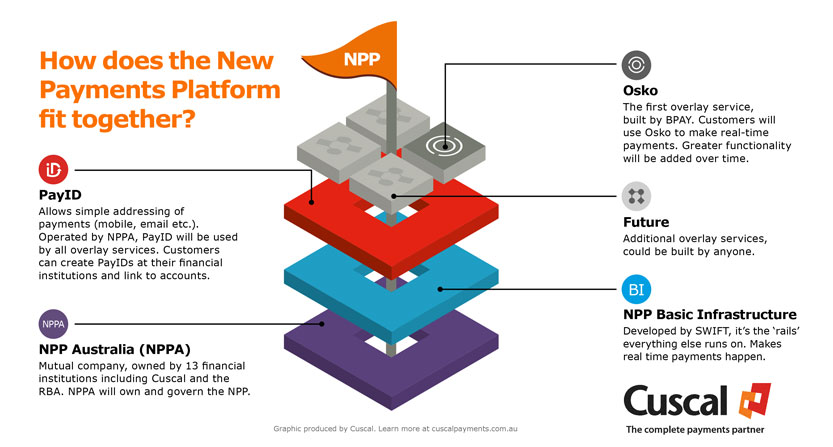
No sensible decision can be made any longer without taking into account not only the world as it is, but the world as it will be.
– Isaac Asimov, “My Own View” in The Encyclopaedia of Science Fiction (1978)
Celebrated as one of the godfathers of science fiction, Isaac Asimov thought people needed to shift towards what he described as “a science fictional way of thinking.”
If you apply such forward thinking to the smartphone, for example, it’s difficult to think of a future that reverses the far-reaching impacts it has had on human communication and behaviour. However, if you talked to leading futurist thinkers at this year’s SIBOS conference, they might convince you otherwise. To them, the smartphone is old hat. It’s clunky, you have to hold it and tap on it for it to operate. In their view, we won’t use smartphones to connect to the internet for very much longer. Instead, we might be physically connected directly to the internet. As freakish as this may seem today, people are already pursuing exactly this by allowing intrusive technologies into their bodies.
What’s my point with all this? While planning for the future is a part of every company, being at SIBOS brought home to me how absolutely vital this type of futuristic thinking should be for every company that wants to still be here in 20 or 50 years.
In my role as General Manager of Emerging Business at Cuscal, I make it a priority to attend global forums such as SIBOS to get a global perspective on the issues facing payments and financial services right now, and in the future. This year’s SIBOS brought into focus four key themes to me: security, real-time payments, blockchain and disruption itself.
Disruption in financial services
Disruption can be the consequence of intentional and deliberate planning. Equally, it can emerge from causes not seen or mitigated for. At SIBOS, there was a lot of debate on the impact fintechs are having throughout the financial services industry. Some perceived them merely to be part of a “tech cycle”, while others viewed them as a “fundamental shift” in the way we are conducting business.
Another way of looking at this is to examine where the disruption is originating. While disruption is sometimes caused by fintech companies, the reality is that they are often simply the quickest, or best, at taking advantage of disruption which originates elsewhere. Changes in regulation, for example, have been a powerful source of disruption, recently evidenced by the mandate to open APIs in Europe. Additionally, significant increases in network speeds at lower cost are causing disruption, while cloud services are providing low-cost infrastructure to promote disruption. Advances in quantum computing have vastly accelerated processing power and processing speeds of tomorrow will be thousands of times faster than what is available today. All the while, consumer expectations continue to grow and define, if not dictate the norm – not the financial services industry.
Two observations by futurist Frank Zappa, who presented at SIBOS, are particularly relevant. The first was that that change occurs at an exponential rate and the second was that everything is getting faster. So whether you believe fintechs are causing, or are taking advantage of, disruption, it’s not merely misguided for an organisation to use today’s experiences as the benchmark – it’s dangerous.
Real-time payments: how fast is too fast?
There are a number of interesting implications to consider with the expansion of real-time (or instant) payments around the globe. In Australia, there has been tremendous interest around the New Payments Platform (NPP). Former Cuscal GM Adrian Lovney, who was recently appointed as the inaugural CEO of NPP Australia, spoke on a panel discussion at SIBOS alongside representatives from Denmark, Sweden, the UK and US. Some common themes emerged from their conversation:
- Faster payments will become the new norm
- Consumers will expect it to be free
- Companies will expect to pay for services that add value to them
- Cannibalisation of existing payment streams will not be significant
Faster payments drive new payments into the system by largely displacing cash
Despite these shared themes, each of the panelists painted their own distinct vision of what faster payments would look like in their ideal world – or at least in their country. A key point of difference between the faster payment systems was the level of focus pivoted toward “overlays” with many countries (unlike Australia) focused just on the “rails”. An amusing unintended consequence of faster payments in Sweden was the change to the national vocabulary. Now people “swish” each other when making payments. “Swish” is the name of their payments system that has taken on mainstream adoption.
While there was a general consensus that a bridge will be required to allow international faster payments, there was equally broad acknowledgement that there is a long way to go before this becomes a reality. Panelists also cautiously spoke about when a faster payment becomes too fast. Of the four regions represented by the panelists, Australia ranks as the fastest with a clearing response within five seconds. Five seconds doesn’t leave much time to detect fraud or meet AML requirements, both factors which need to be considered carefully as value and usage of instant payments increases.
Cyber security collaboration
Cyber security has been a particularly hot topic ever since the theft of USD 81M from a Bangladeshi bank. In this case the perpetrator obtained the login details of a senior staff member and was able to initiate the transfer of funds utilising their knowledge of the payment system. This theft highlighted the need to ensure appropriate security controls are in place at the point of entry for all transactions. SWIFT is responding to this by upgrading its security procedures and increasing the compliance requirements for participants in its scheme.
The theft also reveals more than just the risk banks are exposed to – it shows how banking customers are equally exposed via the trust model that banks operate with. When people put their money in a bank, they put their trust in that bank too. It follows therefore that customers will tell their bank things they won’t necessarily tell other organisations and that’s because they invest a deep trust in the bank to hold and protect this information.
Protecting our payments infrastructure is a top priority at Cuscal, as it is for all financial institutions. What’s also clear is that defending against security hackers is not something that can be done alone and there was much discussion at SIBOS about this. At Cuscal, we already have relationships with external providers to build roadblocks in the way of an attack, and we will continue to invest in these technologies and services. The work we have done over the past few years to be the first Australian financial institution to be wholly PCI-DSS compliant will assist in this process. It was interesting to note that very few of the other attendees at conference have embedded this level of control within their businesses.
Moving from blockchain to distributed ledgers
Blockchain is the technology that powers the BitCoin network. Last year Blockchain created a lot of excitement at SIBOS as it was touted as the answer to everything. This year the discussion moved on from Blockchain and towards Distributed Ledger Technology (DLT). DLT differs from Blockchain because it was originally implemented by building security, confidentiality and “smart contracts” into the underlying technology; all features that are critical to being able to use a distributed ledger in a commercial environment.
Cuscal is a member of HyperLedger, the project being run by the Linux Foundation. Linux is the operating system most of our core payments system run on. The Linux Foundation is known for its capacity to manage Open Source projects to deliver robust systems that are the combined work of many thousands of contributors.
Over the last year the HyperLedger Project has made tremendous progress in building a robust product that could be deployed in early 2017 to address real problems. It was great to meet with the Hyperledger team and other members at SIBOS to discuss use cases that could apply to Australia as well as scope a way to develop a Proof of Concept in a short timeframe. You will hear more from me as this develops.
How quickly will changes be upon us?
We live in interesting times. While many of the technologies I saw at SIBOS are at the ideation stage, some others are at proof-of-concept stage and are now treated as products. While many of the things we discussed sounded like science fiction we can see from history how quickly science fiction becomes science fact.
How many people remember the flip phone from Star Trek or the hoverboard from Back to the Future? Well flip phones are now old hat and real hoverboards exist (they’re just ridiculously expensive). An Australian research team recently froze a photon (light) which has been likened to the scene from Star Wars: The Force Awakens where Kylo Ren uses the Force to stop a laser blast mid-air.
So while the main themes from SIBOS, which I’ve outlined above, are concepts most of us are familiar with already, they’re the ones closest to reality. Others are further away for now but will be affecting us soon. One certainty I came away with is while today is faster than yesterday it will be slower than tomorrow.
By Brian Parker, General Manager, Emerging Business





















